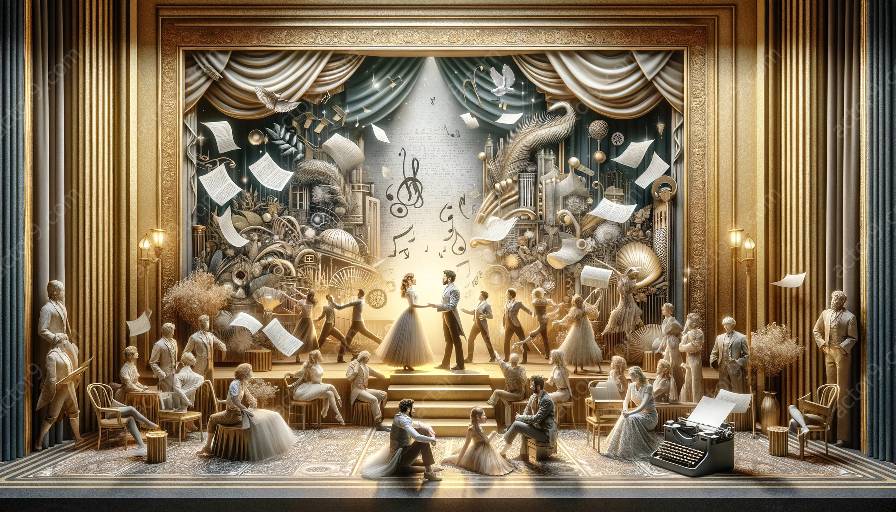When it comes to creating captivating narratives and memorable songs, writers in the musical theater genre face the unique challenge of adapting their work for different mediums. Writing for stage musicals versus screen musicals requires distinct strategies and considerations to effectively engage the audience and bring the story to life.
The Nature of Stage Musicals
Stage musicals, often performed in theaters and live venues, offer a dynamic and immersive experience for the audience. Writers for stage musicals must consider the spatial limitations of the stage, the impact of live performances, and the interplay between music, choreography, and storytelling.
Strategies for Writing for Stage Musicals
1. Emphasize Visual and Spatial Storytelling: Stage musicals rely on visual and spatial storytelling, requiring writers to create scenes and sequences that effectively use the stage space, lighting, and set design to convey the narrative.
2. Leverage the Power of Live Performance: Writing for stage musicals involves crafting moments that capitalize on the energy and immediacy of live performance, allowing for emotional connection with the audience through powerful vocal performances and stage presence.
3. Seamless Integration of Music and Dialogue: Stage musical scripts require a seamless blend of music and dialogue, with songs and spoken lines complementing each other to advance the plot and develop character relationships.
The Dynamics of Screen Musicals
Screen musicals, on the other hand, take advantage of the visual and cinematic aspects of storytelling. Writers for screen musicals must adapt their approach to engage audiences through the intricacies of film, including cinematography, editing, and sound design, while maintaining the integrity of the musical elements.
Strategies for Writing for Screen Musicals
1. Utilize Cinematic Storytelling Techniques: Writers of screen musicals can incorporate cinematic techniques such as close-ups, montages, and creative camera angles to enhance the visual impact of musical performances and emphasize character emotions.
2. Leverage the Potential of Sound Design: In screen musicals, the collaboration between writers, composers, and sound designers is crucial for creating a rich auditory experience, including the use of sound effects and layered music to amplify emotional resonance.
3. Adapt to Non-linear Narrative Structures: Screen musicals often embrace non-linear storytelling, allowing writers to explore diverse timelines and locations through the use of editing and narrative structures that captivate the audience in a cinematic format.
Conclusion
Mastering the art of writing for stage musicals versus screen musicals requires an understanding of the unique strategies and considerations inherent to each medium. Aspiring writers in the realm of musical theater scriptwriting can benefit from embracing the nuances of spatial storytelling, live performance dynamics, and cinematic techniques to craft compelling narratives and unforgettable musical experiences.




































